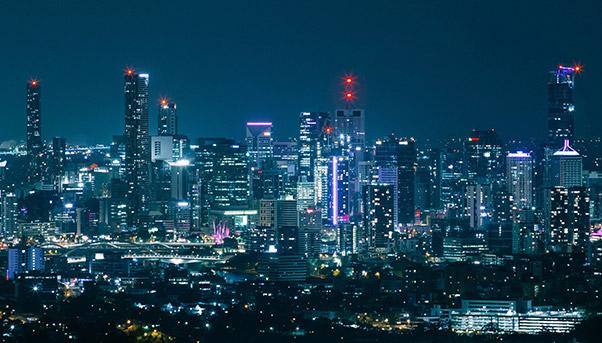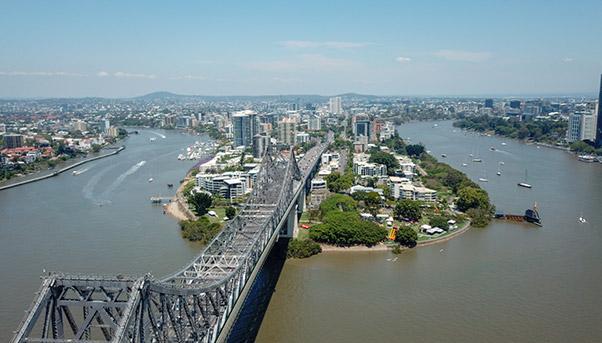
What will the cities of the future look like? Sustainable and sensitive,
built to fit the current and future needs of their inhabitants, and
capable of using data gathered by technology in the service of improving
people’s lives.
That’s the view of Carlo Ratti – architect, engineer and expert of new technology applied to urban planning. The director of the Senseable City Lab at Boston’s Massachusetts Institute of Technology, elaborated on his outlook during a speech on November 20 at the workshop called “Flexible Cities. Advancing Australia”,
organized by Salini Impregilo in collaboration with the University of
Technology Sydney-UTS. The Australian model as one example of
sustainable and modern urban development was at the center of the event,
where the Economist Intelligence Unit presented the report “Flexible
Cities. The Future of Australian Infrastructure.” Carlo Ratti dived deeper into this subject in an exclusive interview with “We Build Value.”
Sydney, Melbourne, Brisbane, Perth: some of Australia’s largest cities are at the center of important urban renewal projects. How would you define the model of urban development that they are experiencing?
«I don’t think it is a single model. The big question is: is it better to expand up or out? Horizontal expansion means consuming greenfield or virgin space, while vertical expansion means increasing the urban density. Personally I tend towards the second option. Among the many models you mention, I like to point out the positive example of Melbourne, which is based on an increase in urban density. In the 1980s, the city center was neglected and run-down, and it really needed to turn the page. It was my friend Rob Adams, who had lived in South Africa and later became Chief Architect in Melbourne, who enacted a different sort of urban development strategy that turned the situation around in the space of just a few years. The idea was to pull people back to living in the city center, therefore harnessing a greater urban density as a motor for rebirth. In support of this goal, the city got a new transport system, and new public spaces contributed to transforming the dynamics of people’s interactions, making Melbourne into the city it is today, and propelling it into the top ranks of the world’s most livable cities».
Most of the infrastructure spending in Australia, both at the federal and state level, is for railway transport. Subways, above all, but also light railways. Is this the way to make cities more sustainable?
«I believe we are headed towards a diversification of means of transport, facilitated by an ever increasing use of data. Digital data can enable people to choose between a broad ‘transport portfolio’, or a menu of options based on real time information: the freedom to ride a bicycle, share a car, walk, take a taxi, use the subway or train, or hitchhike with friends. In this new scenario, investing in rail transport is certainly very important».
The example of Paris, which is building the Grand Paris Express (the largest sustainable mobility project in the world) seems to confirm this trend. Does the French capital demonstrate that major European cities can also have a large and efficient public transport network?
«Absolutely. I think it is about time to start discouraging the use of private cars, in favor of more sustainable mobility models such as car and bike sharing, the use of public transport and, in the not-too-far-off future, self-driving cars, either individually owned or for shared use».
How can technology and new discoveries help improve the quality of transportation in large metropolitan areas? Could you give us an example?
«Let’s take autonomous driving. The benefits from self-driving cars
is not so much the simple act of no longer having to keep your hands on
the wheel, but rather the advantages it brings to the road and street
infrastructure. A self-driving car acts like a completely different
car: after it brings us to work in the morning, it can be right back on
the road, giving our children a ride to school, or the neighbor’s
children, are anyone else in the city for that matter. So we’re talking
about a hybrid public-private transport system, which in theory could lead to a reduction in the number of cars on the streets.
Parking lots would also become something different with self-driving
cars. In a study by our lab at MIT using data provided by the city of
Singapore – one of the most avant-garde places for mobility – we
observed that the space needed for parking could fall as much as 70%
in an autonomous driving scenario, changing the urban landscape.
Imagine what it would be like if each unnecessary parking space could be
replaced by a tree or a small garden. Or if a street could change
configuration according to how it is used: a few months ago, for
example, CRA (Carlo Ratti Associati) worked with SideWalk Labs (which is
owned by the Google group) to develop a system of self-configuring
streets in Toronto, where the same stretch of lane could change function
during the arc of a single day: in the morning it could be a commuter
lane, and in the evening, a pedestrian walkway».

Story Bridge, Brisbane
Uber is testing the idea of transporting its customers with flying cars. Could these sort of solutions work for urban areas?
«To be honest, even if flying cars appear in a lot of science fiction – starting with ‘Metropolis’ envisioned by Fritz Lang’s film in the 1920s – I don’t think that flying cars are a credible alternative for the future of mobility. There are a lot of limitations, starting with the laws of physics: to keep a person weighing 60 or 70 kilograms up in the air, you need to move a huge amount of air. This is why helicopters are so noisy and why they consume so much fuel…All you would need would be ten of them flying around a city center to make it unlivable… imagine the noise, and the danger, if there were tens or hundreds of thousands of them».
If it is true that the future of our planet will belong to cities, what will the city of the future be like?
«They will be more sustainable by necessity. Cities have a large
impact, on a global scale. Their impact can be summed up in four
numbers: 2-5-75-80. On a global level, cities take up 2% of the Earth’s surface, but hold 50% of the world’s population, and they are responsible for 75% of energy consumption and 80% of CO2 emissions. If we can improve cities, even just a little bit, we can have a big impact on the entire planet.
From this point of view, the new technologies will
enable us to make a better use of our existing infrastructure, through
sharing. Today, on average, a car is only moving for 5% of the time. The
remaining 95% of the time, on the other hand, it sits unused, parked somewhere. If self-driving cars were able to also increase the demand for car sharing, we could create urban transport systems that would be a lot more sustainable».
How can the large amount of data produced by a city be used to improve the life of its inhabitants?
«It is already happening. Using the data from cellular phones, for example, we can find out about traffic conditions in real time. We already ran tests on this in Italy with Telecom Italia Mobile back in 2006, with the project Real Time Rome. It was the first pilot project
in the world where data from the cellular phone network was used on a
large scale and in a shared manner in order to better understand a city –
Rome, in this case. Today, this exact same data, with similar algorithms, enables us to see on Google Maps which streets are clogged with traffic
and which are not — and to change our route accordingly in real time. I
think that in the future we will see a lot more ‘feedback loops’ like
this, which will enable us to make quick decisions that lead to a better quality of life.
One last reflection: the goal of getting a better understanding of traffic flows is an old dream of Ildefonso Cerdà, the architect who is the father of modern Barcelona.
He was one of many people who dreamed about improving the quality of
urban planning. «Building a city […] will soon become really and truly a
science». Today, with the spread of networks, sensors and electronic
tools like cellphones, a lot is changing about our dynamic understanding of how cities work».
Which urban development project happening right now excites you the most?
«The one I’m following most closely: the plan to transform the former site of Expo 2015 World Fair in Milan into MIND-Milano Innovation District. Our design studio Carlo Ratti Associati is working with Lendlease. A new area will be created on the border between Milan and the neighboring town of Rho for research and innovation centers, which will be concentrated around a linear park that is among the largest in Europe. It will also be the first neighborhood to be designed for driverless cars».

